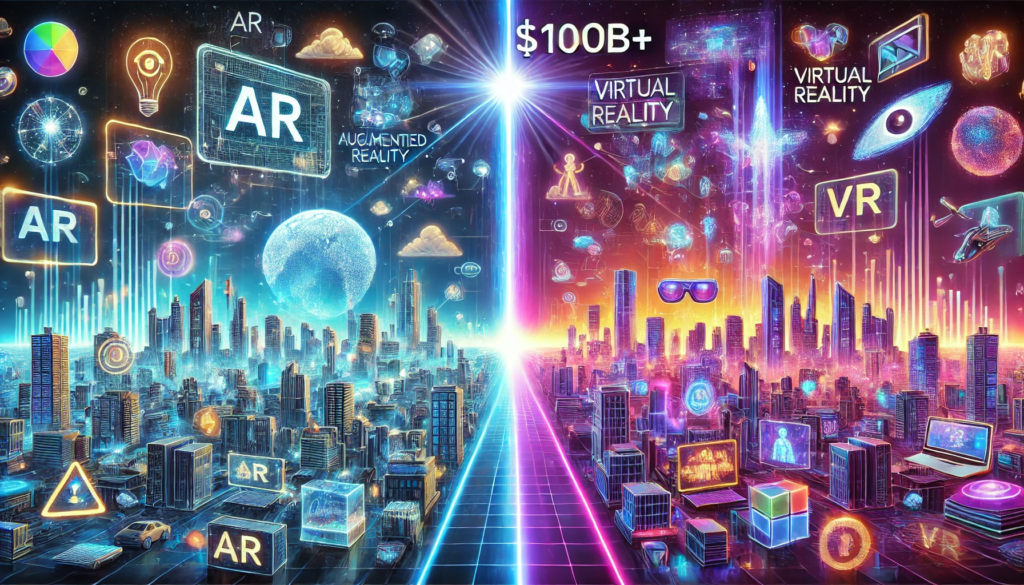Augmented Reality (AR) and Virtual Reality (VR) have redefined the digital landscape since their mainstream emergence, transforming how we interact with technology and each other. From gaming to education, these immersive tools have enhanced user experiences, integrated digital and physical worlds, and opened a wealth of opportunities—projected to drive a market worth over $100 billion by 2026. Here’s a deep dive into their influence and potential.
Transforming the Digital Space
AR overlays digital elements onto the real world, like virtual furniture in your living room via IKEA Place, while VR immerses users in entirely digital environments, such as the rhythmic battles of Beat Saber. Together, they’ve elevated digital interactions beyond flat screens. In gaming, VR has birthed new genres, while AR’s Pokémon Go blended virtual characters into real streets, captivating millions. Education has seen VR replicate classrooms, boosting retention rates and AR enhance learning with interactive overlays, like virtual dissections.
Retail has also evolved—AR try-ons, such as Sephora’s Virtual Artist, increase consumer confidence by 90%, driving a 17% uptick in sales conversions. Socially, VR platforms like VRChat have fostered 3D networking, especially vital during the pandemic, with 60% of early adopters expecting virtual events to go mainstream within three years. These technologies blur boundaries, merging digital navigation aids with real-world views or creating virtual offices that cut travel needs, reshaping communication and collaboration.
Opportunities on the Horizon
Gaming remains a powerhouse, with AR and VR creating immersive worlds and virtual events. The AR games market alone is forecast to hit $43.1 billion by 2028, offering developers chances to craft novel experiences. Education benefits from VR’s virtual labs and AR’s contextual overlays, personalizing learning and improving medical training efficiency by over 200%. Healthcare leverages VR for surgical simulations—enhancing accuracy by 90%—and AR for real-time data during operations.
Retail thrives with virtual showrooms and try-ons, while social platforms enable shared 3D experiences, like virtual concerts. Unexpectedly, architecture uses VR to visualize designs, and tourism offers virtual heritage tours. With 5G reducing lag, opportunities for seamless integration into daily life grow, from AR navigation to VR fitness apps.
Challenges to Overcome
Despite their promise, AR and VR face hurdles. Privacy concerns loom large, as they collect sensitive data—33% of early adopters see VR as socially risky. High costs, like the Apple Vision Pro’s price tag, and bulky hardware limit access, with 50% citing mobility issues. Ethical worries, including addiction and social isolation, persist, with Americans split on VR’s societal impact.
A Future in Focus
Advancements in AI, hardware, and 5G are propelling AR and VR forward. Lighter headsets, haptic feedback—crucial for 60% of adopters—and mixed reality blending both technologies signal broader adoption. By 2025, 36% expect 5G to enable mobile VR, while 70% of early adopters foresee changes in media, work, and retail. Innovative uses, like AR in cars or VR in training, hint at untapped potential.
AR and VR have reshaped the digital space, making it more immersive and interconnected. Their influence spans entertainment, education, healthcare, and beyond, with opportunities for innovation abound. Yet, balancing growth with privacy, affordability, and ethical concerns will determine their trajectory. As the market races toward $100 billion, AR and VR stand poised to redefine our digital future—one virtual step at a time.


